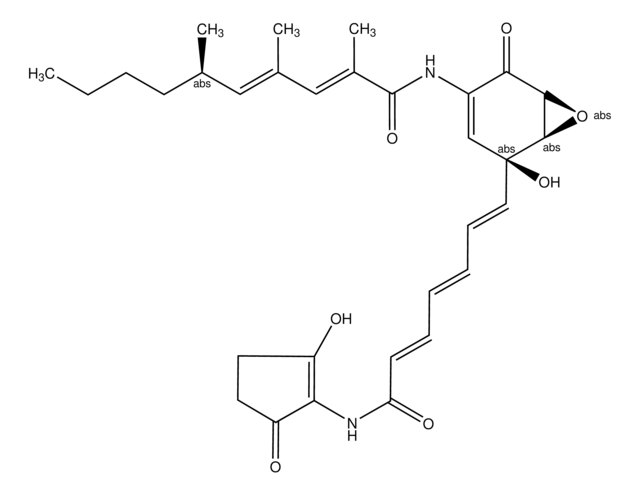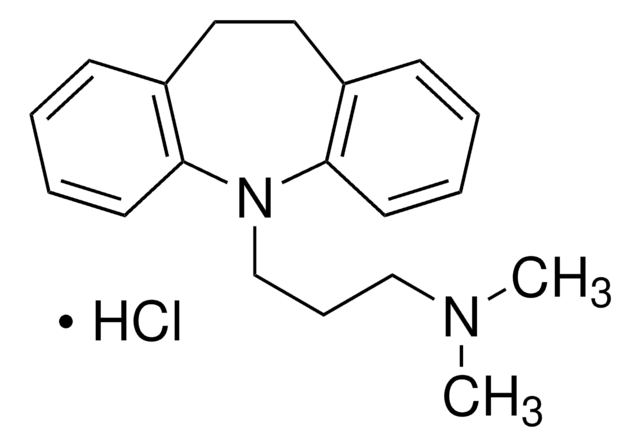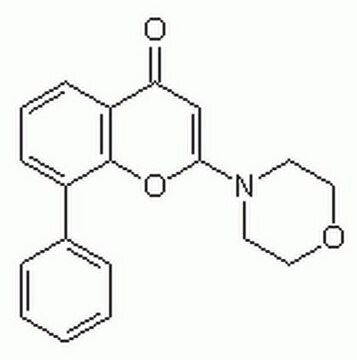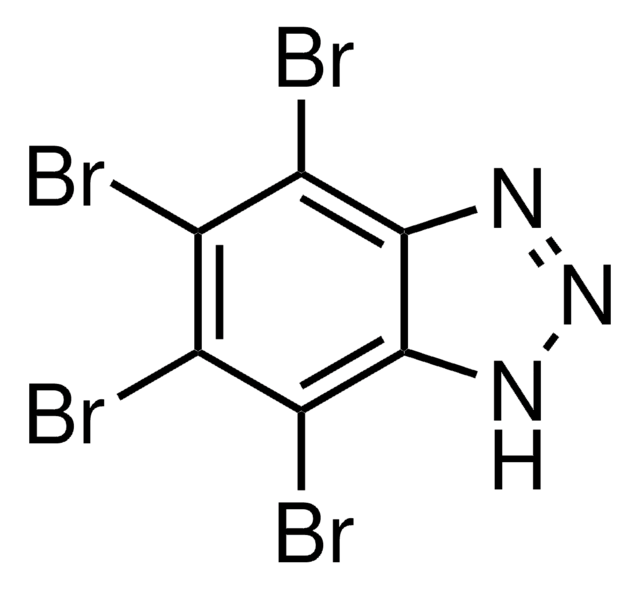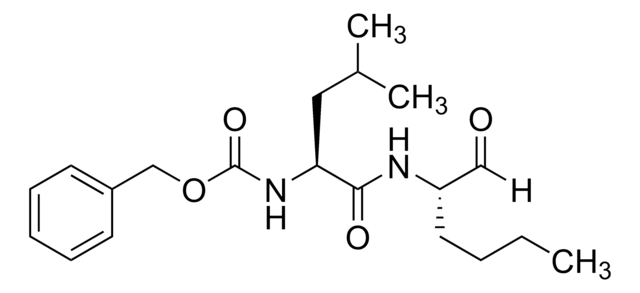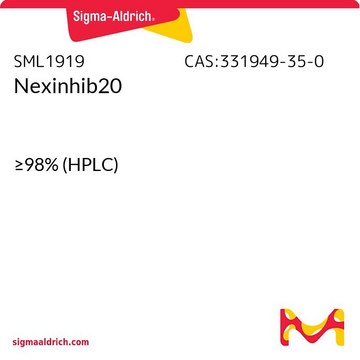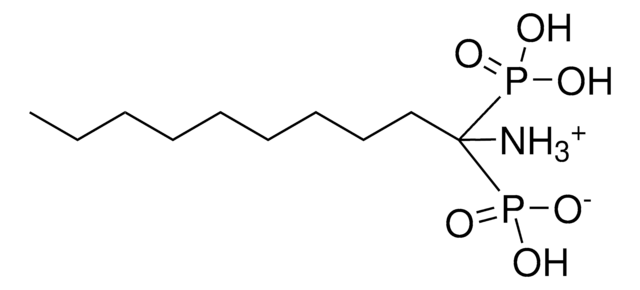D1692
GW4869
≥90% (NMR), powder, N-SMase inhibitor
Synonyme(s) :
N,N′-Bis[4-(4,5-dihydro-1H-imidazol-2-yl)phenyl]-3,3′-p-phenylene-bis-acrylamide dihydrochloride
About This Item
Produits recommandés
product name
GW4869, ≥90% (NMR)
Niveau de qualité
Pureté
≥90% (NMR)
Forme
powder
Conditions de stockage
desiccated
protect from light
Couleur
light yellow to yellow
Pf
>300 °C
Solubilité
DMSO: 0.2 mg/mL
Auteur
GlaxoSmithKline
Température de stockage
2-8°C
Chaîne SMILES
Cl.Cl.O=C(Nc1ccc(cc1)C2=NCCN2)\C=C/c3ccc(\C=C/C(=O)Nc4ccc(cc4)C5=NCCN5)cc3
InChI
1S/C30H28N6O2.2ClH/c37-27(35-25-11-7-23(8-12-25)29-31-17-18-32-29)15-5-21-1-2-22(4-3-21)6-16-28(38)36-26-13-9-24(10-14-26)30-33-19-20-34-30;;/h1-16H,17-20H2,(H,31,32)(H,33,34)(H,35,37)(H,36,38);2*1H/b15-5-,16-6-;;
Clé InChI
NSFKAZDTKIKLKT-LOLTXFFGSA-N
Description générale
Application
- as an inhibitor of neutral sphingomyelinase and exosome biogenesis
- to analyse the effects of arsenic trioxide (ATO) treatment for hepatoma carcinoma HCCLM3 cells on ceramide production
- to determine the contributions of p75 neurotrophin receptor (p75NTR) and tropomyosin receptor kinase A (TrkA)- coupled pathways to nerve growth factor (NGF)-induced thermal hypersensitivity in rats
Actions biochimiques/physiologiques
Caractéristiques et avantages
Code de la classe de stockage
11 - Combustible Solids
Classe de danger pour l'eau (WGK)
WGK 3
Point d'éclair (°F)
Not applicable
Point d'éclair (°C)
Not applicable
Équipement de protection individuelle
Eyeshields, Gloves, type N95 (US)
Certificats d'analyse (COA)
Recherchez un Certificats d'analyse (COA) en saisissant le numéro de lot du produit. Les numéros de lot figurent sur l'étiquette du produit après les mots "Lot" ou "Batch".
Déjà en possession de ce produit ?
Retrouvez la documentation relative aux produits que vous avez récemment achetés dans la Bibliothèque de documents.
Les clients ont également consulté
Notre équipe de scientifiques dispose d'une expérience dans tous les secteurs de la recherche, notamment en sciences de la vie, science des matériaux, synthèse chimique, chromatographie, analyse et dans de nombreux autres domaines..
Contacter notre Service technique